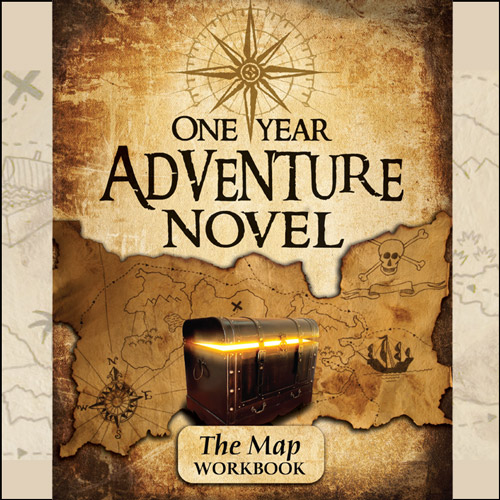10 Short Stories Every Young Writer Should Read
 Some of the best lessons in writing are freely—or at least cheaply—available in the classroom of words.
Some of the best lessons in writing are freely—or at least cheaply—available in the classroom of words.
Tolstoy is always lecturing. Hemingway’s office door is always open. Bradbury offers private lessons in blocks of ten and twenty, at less than a buck a piece.
The title of this post is probably misleading. I don’t think any one list can be considered essential reading material for the aspiring novelist. But I’m convinced that great writers take the time not only to read great stories, but to study them.
Young writers probably know this instinctively. I don’t know which came first, the story or the writer, but it is safe to say that we are drawn to the sorts of stories we wish to tell, or at least, those stories we fear we aren’t capable of telling. I don’t admire Edgar Rice Burroughs for his literary style, but as a boy I loved him for his grasp of adventure. I learned at his feet, in an African jungle and on the great canals of Barsoom. Tarzan taught me about theme and danger and the law of apes, and John Carter of Mars showed me what it meant to long for home while trying to escape it.
Of course, it helps to recognize yourself as a student. You are more apt to learn if you enroll consciously, if you pay attention to the storyteller’s brushstrokes.
It also helps to narrow the scope of your subject. Short stories are excellent classrooms because they are confined. Their chalkboards are easily filled in an hour.
Thus, the following is a list of ten short stories every young writer should read, chosen not just because they are famous and important and brilliant, etc., etc., but because they clearly display a master’s technique. Each, in its own unique way, demonstrates something both universal and relevant, something worth emulating.
Two suggestions as you read. First, don’t accept the burden of mastery. O. Henry’s talent for irony was a sort of superpower few other writers have matched. Twain’s gift for making us laugh at human nature while simultaneously provoking a twinge of shame is something he spent a lifetime developing.
Instead, look at each story as a crash course in a single basic technique: irony, or revelation, or human nature, or descriptive imagery. Few painters will ever capture a smile like Mona Lisa’s, but that shouldn’t keep artists from practicing lips.
Second, begin by reading these stories the way their creators intended: as stories. That is, on first reading, don’t look for characterization or irony or setting. Don’t read with an analytical eye, as if in preparation for a five-paragraph essay. Instead, give each story the benefit of the doubt. Let it move you however it means to. Let it poke you in the eye or stomach or heart and pull forth tears or laughter or blood. Let it be, in the beginning, the voice of an old man spinning tales by firelight.
This may seem a contradiction. Which is it? I hear you asking. Should I or shouldn’t I read for technique?
Put simply, you won’t really understand the most powerful techniques an author uses until you feel the story as a story. It is one thing to study meter and rhythm, strings and percussion. It is another to let Beethoven’s Ninth Symphony wash over you. You can’t grasp Beethoven’s genius until his haunting, joyous melody inhabits your soul. And you can’t appreciate Kipling’s “Road-song of the Bandar-log” until the playful idiocy of his monkeys has made you smile.
In short, I loved every literature class I took in college, but I learned the most when, like Walt Whitman hearing the learn’d astronomer, I left the lecture-room and glided out into the mystical, moist night air and gazed up in perfect silence at A Princess of Mars.
Here then, are ten short stories that every young writer should read, first and foremost because they are great stories, but second and second-most because they are great lectures on at least one aspect of writing or storytelling.
1. Ray Bradbury – “All Summer in a Day”
Ray Bradbury is a short story master. In this science fiction tale about school children on Venus who are getting to see the sun for the very first time, his lush prose illustrates the pain of human loss. Pay attention to his descriptions and to what the story makes you feel at its resolution.
2. Ernest Hemingway – “Indian Camp”
Hemingway too is a master of the short form, and in this subtly woven story about the pain of suicide, demonstrates his ability to say something profound in the simplest way, and to craft a whole story around something he never mentions.
3. Flannery O’Connor – “A Good Man is Hard to Find”
One of the great southern writers, O’Connor typically works with larger-than-life situations. This story puts truth in the mouth of its villain, and redemption at the end of a gun. Perhaps the best way to enjoy this story is by listening to the author’s 1959 audio recording.
4. Richard Connell – “The Most Dangerous Game”
Endlessly anthologized—and for good reason—this story embodies the adventure genre while somehow also reaching beyond it. This is a fast-paced tale with enough plot twists to satisfy Alfred Hitchcock. Well worthy of study and emulation.
5. O. Henry – “Gift of the Magi”
All of O. Henry’s stories are characterized by irony, but this one has a poignancy that seems to resonate with readers through cultural changes that have left the story’s setting and circumstances in the past. After you’ve read the story, ask yourself why the author picked this title. If the last paragraph doesn’t move you, your heart has grown roots. Dead ones.
6. Shirley Jackson – “The Lottery”
Though “controversial” is not always a compliment, in this case it points to an idea-driven plot that is powerful enough to provoke both positive and negative reactions from its readers.
7. “The Lady or the Tiger”
Fairy tales are especially important for grown-ups. This one exemplifies the power of dilemma, and highlights the frustration of being forced to choose not only our own fate, but that of someone else.
8. Kurt Vonnegut, Jr. – “Harrison Bergeron”
Vonnegut’s voice and humor are always on display, though he rarely gives you what you expect. He’s a bit like a stage magician, and in this nifty literary trick he plucks some startlingly deep questions from a shallow—but funny—television hat.
9. Rudyard Kipling – “Rikki-Tikki-Tavi”
Old-school storytelling. Kipling demonstrates that anthropomorphism is not the exclusive domain of bad children’s literature and wooden allegories.
10. Daniel Keyes – “Flowers for Algernon”
Before finally selling this unique science-tragedy, Keyes supposedly declined five publication offers from editors who wanted him to change (that is, ruin) the ending to make it happier.
And there you have it. Please leave comments or suggestions for other great stories, as well as what you learned reading them.
For even more “classroom instruction,” check out:
- Philip K Dick – “We Can Remember It for You Wholesale”
- Leo Tolstoy – “Three Questions”
- Anton Chekov – “The Looking Glass”
- Jack London – “To Build a Fire”
- James Thurber – “The Secret Life of Walter Mitty”
…
 Daniel Schwabauer, MA, is the creator of The One Year Adventure Novel and Cover Story Writing creative writing courses. His professional work includes stage plays, radio scripts, short stories, newspaper columns, comic books and scripting for the PBS animated series Auto-B-Good. His young adult novels, Runt the Brave and Runt the Hunted, have received numerous awards, including the 2005 Ben Franklin Award for Best New Voice in Children’s Literature and the 2008 Eric Hoffer Award. His third book, The Curse of the Seer, is coming out in 2015.
Daniel Schwabauer, MA, is the creator of The One Year Adventure Novel and Cover Story Writing creative writing courses. His professional work includes stage plays, radio scripts, short stories, newspaper columns, comic books and scripting for the PBS animated series Auto-B-Good. His young adult novels, Runt the Brave and Runt the Hunted, have received numerous awards, including the 2005 Ben Franklin Award for Best New Voice in Children’s Literature and the 2008 Eric Hoffer Award. His third book, The Curse of the Seer, is coming out in 2015.



I loved Rikki-Tikki-Tavi as a kid (and really the whole weird mash of The Jungle Book). It’s been a really long time since I read it, but now I want to again. 🙂
I think old writers should read them too. And re-read them. It’s really great to have this guidance for a good selection, and what to look for – many thanks.